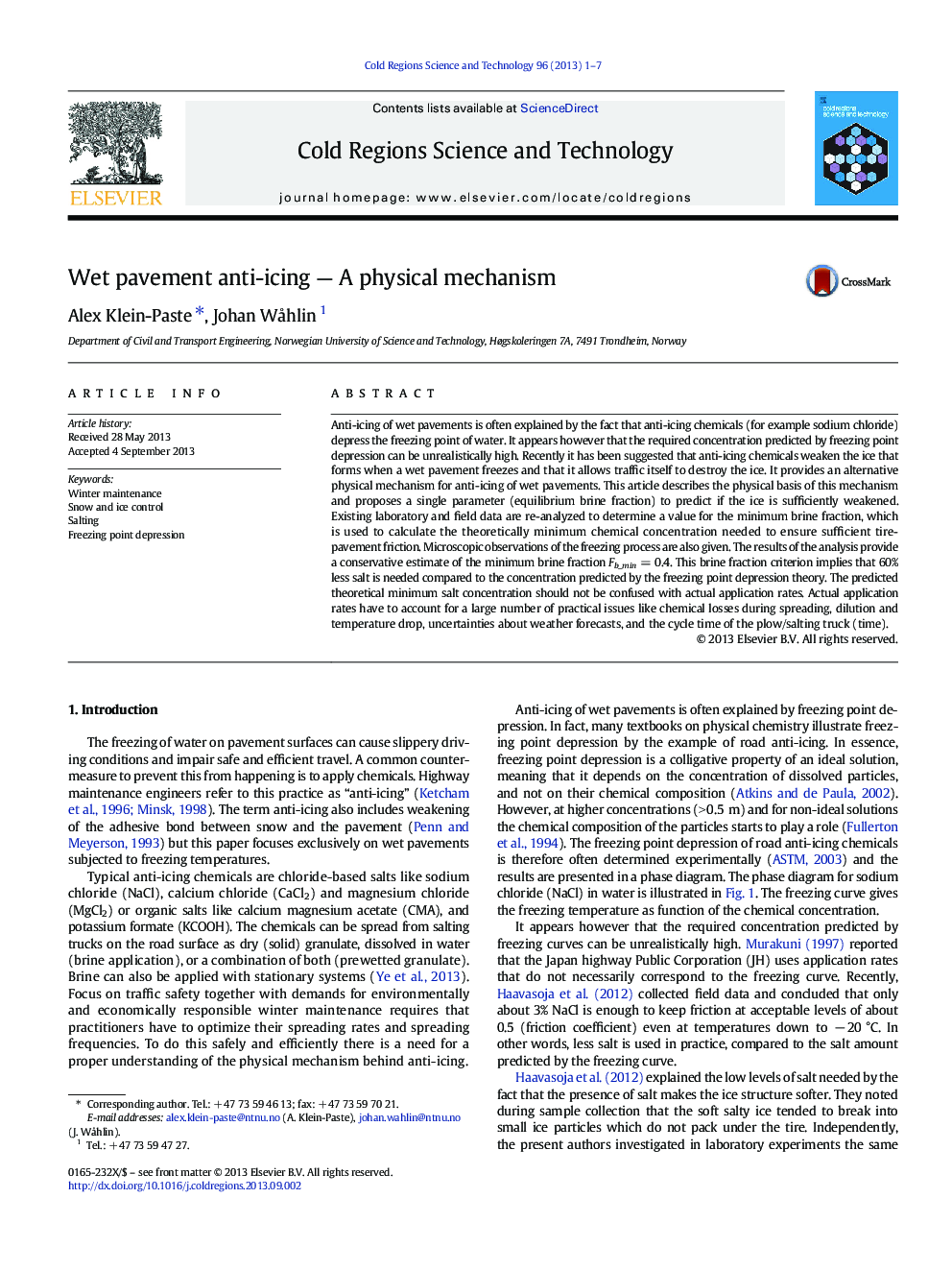| کد مقاله | کد نشریه | سال انتشار | مقاله انگلیسی | نسخه تمام متن |
|---|---|---|---|---|
| 4675804 | 1634466 | 2013 | 7 صفحه PDF | دانلود رایگان |
• This article shows that anti-icing of wet pavements do not only rely on depressing the freezing point.
• A physical mechanism for wet pavement anti-icing is described, considering the weakening of ice by anti-icing chemicals.
• A new criterion (brine fraction) is proposed to calculate the theoretical minimum salt concentration.
• The probability of sufficient friction as a function of the brine fraction is determined for laboratory and field data.
Anti-icing of wet pavements is often explained by the fact that anti-icing chemicals (for example sodium chloride) depress the freezing point of water. It appears however that the required concentration predicted by freezing point depression can be unrealistically high. Recently it has been suggested that anti-icing chemicals weaken the ice that forms when a wet pavement freezes and that it allows traffic itself to destroy the ice. It provides an alternative physical mechanism for anti-icing of wet pavements. This article describes the physical basis of this mechanism and proposes a single parameter (equilibrium brine fraction) to predict if the ice is sufficiently weakened. Existing laboratory and field data are re-analyzed to determine a value for the minimum brine fraction, which is used to calculate the theoretically minimum chemical concentration needed to ensure sufficient tire-pavement friction. Microscopic observations of the freezing process are also given. The results of the analysis provide a conservative estimate of the minimum brine fraction Fb_min = 0.4. This brine fraction criterion implies that 60% less salt is needed compared to the concentration predicted by the freezing point depression theory. The predicted theoretical minimum salt concentration should not be confused with actual application rates. Actual application rates have to account for a large number of practical issues like chemical losses during spreading, dilution and temperature drop, uncertainties about weather forecasts, and the cycle time of the plow/salting truck (time).
Journal: Cold Regions Science and Technology - Volume 96, December 2013, Pages 1–7
